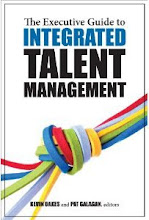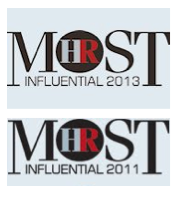 To finish 2007, I wanted to refer to a couple of articles published by Employee Benefits magazine that include some of my comments.
To finish 2007, I wanted to refer to a couple of articles published by Employee Benefits magazine that include some of my comments.
First of all, December’s report on how benefits impact business performance provided for Financial Directors:
"In today's knowledge-based, service economy, a substantial proportion of an organisation's value is held in its employees. Customer service levels, sales ability and intellectual assets tend to be worth more to the bottom line than the physical, non-human assets of many companies.
Increasingly, therefore, business leaders are recognising the correlation between employee attitudes and total shareholder return. David Ulrich, professor of business at the University of Michigan and HR guru says organisations which have seen an average 10% increase in positive employee attitudes, experience an average 4% increase in customer sales, leading to an average 2% increase in investor returns. "It's a clichÈ, but in a knowledge economy, employees are an organisation's greatest
asset," says Ulrich.As Jon Ingham, director at human capital consultancy Strategic Dynamics, points out: "Many organisations are starting to understand that ongoing competitive advantage will depend increasingly on the quality and engagement of their people compared with competitors. So investing in human capital is partly about ensuring that the people in the organisation are fully equipped to deliver short-term business success, but secondly, it's also about having the capability to take the organisation forward and ensure that there is a basis for sustainable competition too."
In the UK, vanguard organisations such as the Royal Bank of Scotland, Nationwide and Standard Chartered have been able to apply scientific approaches to quantify the value of human capital investment on improved business performance. They have the advantage of holding data that they collect for the Financial Services Authority, as well as having many branches or call centres all doing pretty much the same thing, so they can scientifically test one operation against another, apply the data they hold and look for statistically valid correlations.
Ingham warns that in most organisations the costs of gathering that level of data is punitive. He recommends a more qualitative, and discursive analysis on understanding the value of human capital in the organisation: "Look at the investments that have gone into human capital, like the spend on employee benefits. [Gather information] across the boardroom or the executive team involving finance and HR and managers of the business about what the organisation is experiencing in terms of engagement; external perception; [being an] employer of choice; staff engagement survey results; and then finally place focus on the business results."
Naturally, a financial director's primary attention tends to be on the harder metrics of cost control and growth, than the seemly intangible, hard-to-measure HR concerns of employee recruitment, retention and engagement. But focusing solely on what can be measured can undermine the potential to improve business performance."
“One company that Towers Perrin worked with received £47 back for every £100 invested in pay, and £700 for every £100 invested in leadership."
This is far too simplistic an analysis to provide any useful information to FDs. Calculating a financial return on investment is hard because of all the other factors in an organisation that will also inform the financial results. And it may not be the best measure anyway. ROI may be useful if a benefit is introduced simply on the basis of costs and returns. But in many cases, benefits are used to support the positioning of an organisation, helping it become an employer of choice, or just ensuring that it is offering at least the same level of benefits as its competitors. In these cases, benefits are not being introduced purely for financial reasons, and a financial ROI is not the best measure of their success.
For example, in a 2006 survey, McKinsey found that the main reasons companies offered benefits to employees were: to attract and retain talent (58%), to meet responsibilities to employees (30%), the comply with Union agreements (7%), to support its corporate image (2%), to increase employee productivity (1%) and to secure tax advantages (1%). It is only the last two of the reasons that lend themselves easily to the calculation of ROI.
Reward and benefits managers should also be wary of requests to prove a return on investment. In many cases, if a Chief Executive asks to see a ROI, it is simply because they do not think there is a positive return. In this situation, a manager would do better to spend their time improving the effectiveness and delivery of the benefits, rather than worrying about calculating the return.









































